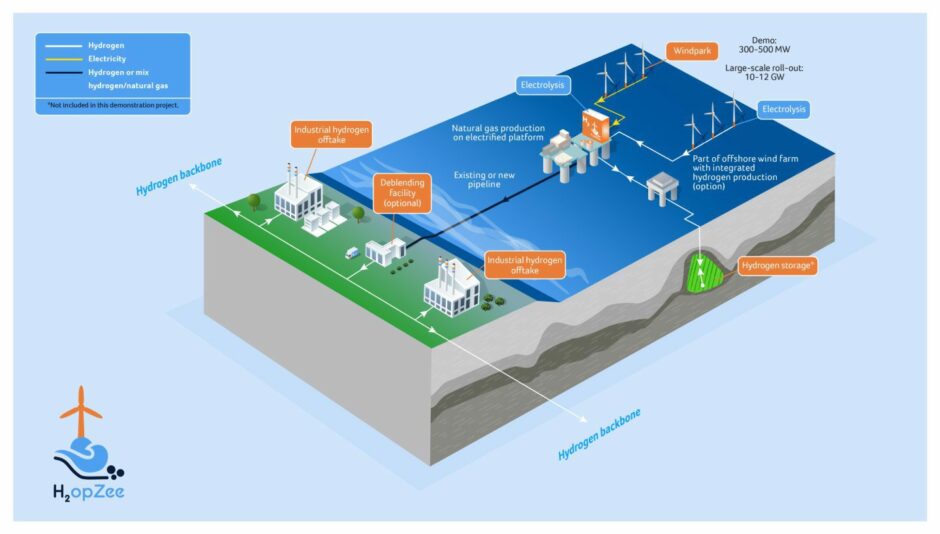
RWE and Neptune Energy have commissioned a series of technical feasibility studies in support of plans to build green hydrogen production and transport infrastructure in the North Sea.
The energy majors aim to build 300-500 megawatts (MW) of electrolyser capacity in the North Sea, producing green hydrogen using energy output from a dedicated offshore wind farm.
Working together under the ‘H2opZee’ consortium, the two have awarded contracts to turbine manufacturer Siemens Gamesa and Dutch engineering contractors H2SEA and Enersea to support concept engineering work as part of the project’s feasibility phase.
First announced in February, the consortium has continued plans for the development, launching a separate joint feasibility study in June, which is planned to run until the beginning of summer 2023.
This study forms part of the first phase of the project, and will evaluate various technical concepts and locations to assess the optimal solution to generate green hydrogen offshore.
H2SEA will be responsible for offshore platform concept design and engineering, while pipeline concept design has been awarded to Enersea. Concept work on potential wind turbine systems will be handled by Siemens Gamesa.
The new contracts are effective as of August 2022.
The remainder of the technical work will be supported by in-house engineering capability at RWE and Neptune.
The consortium is also working closely with offshore infrastructure owners to evaluate various export options via the existing pipeline network to shore. This would offer capacity to carry 10-12 gigawatts (GW) of hydrogen to shore and “already suitable” for the further roll-out of further gigawatt-scale production, the consortium said.
The second phase will see project implementation begin, though the partners said they have yet to finalise a tender methodology.
Their intention is to establish production at the H2opZee project before 2030.
Neptune Energy’s managing director for the Netherlands, Lex de Groot, said offshore green hydrogen schemes such as this are “the next step in the energy transition”.
“It can be produced right here in the North Sea, giving the Netherlands a leading role in providing green energy to North Western Europe, reducing the need for imports. By re-using existing gas infrastructure, the energy transition can be faster, cheaper and cleaner. This infrastructure is technically suitable and already in place, including landing and possible international connections with other countries, such as Norway, Denmark, Germany and the UK.”
Mr de Groot also pointed to Neptune’s involvement in the PosHYdon pilot – a scheme to produce green hydrogen on the Q13a-A platform which is located about 8 miles off the coast of The Hague – and said the company would be able to harness a wealth of knowledge learned from the project.
RWE Renewables chief executive of offshore wind, Sven Utermöhlen, added: “It’s good that we are taking the next step with the H₂opZee consortium to advance the project. Large-scale production of green hydrogen based on offshore wind is a key solution to decarbonising the industry.
“A demonstration project such as H₂opZee helps us to better understand how this could be put into practice. Thanks to our cooperation with partners such as Neptune Energy, Siemens Gamesa, H2SEA and Enersea, we are getting closer to achieving the Dutch climate goals.”